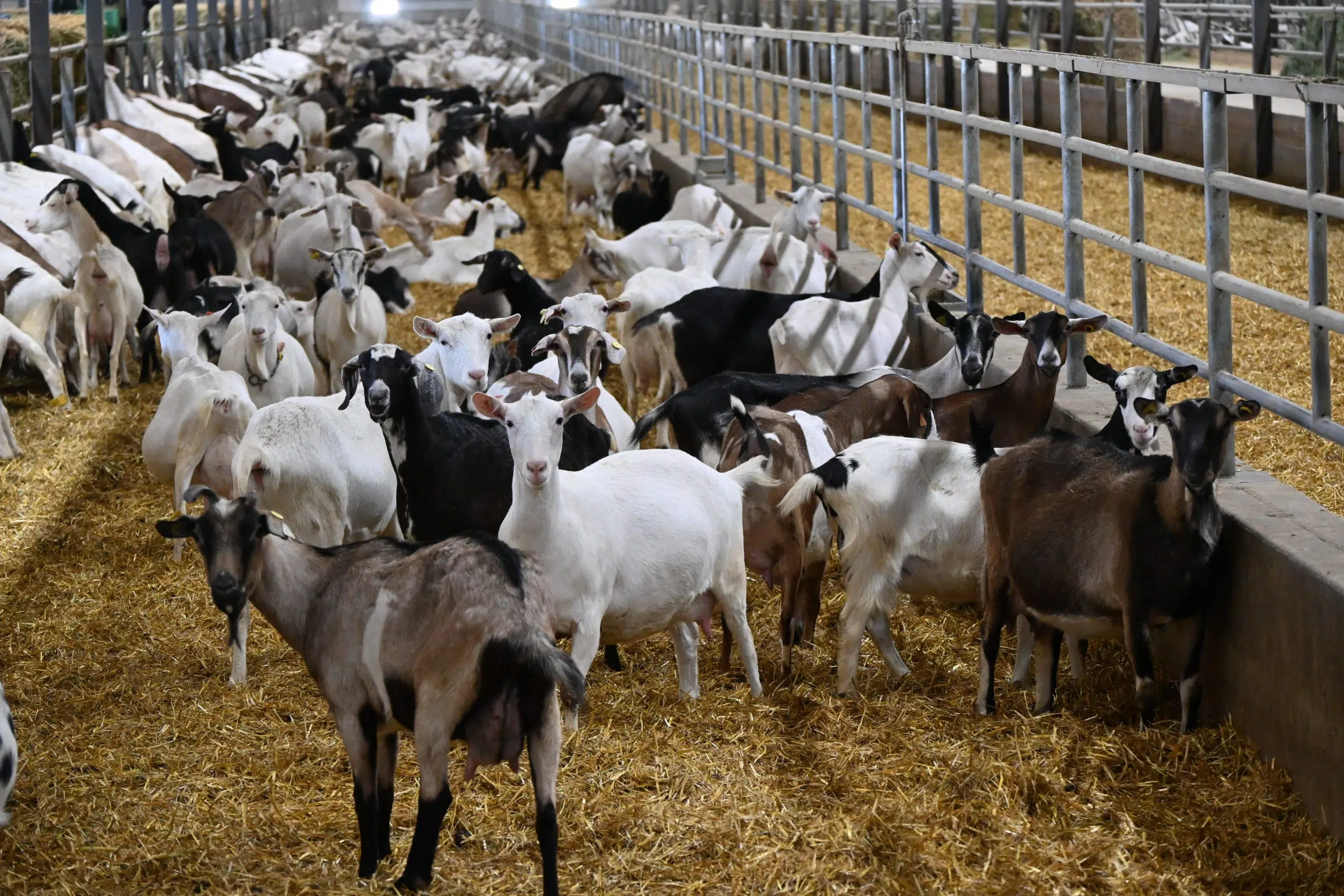June Dairy Month is for more than just cows because dairy goat farms also play a big role in the state. In fact, according to USDA numbers, Wisconsin is the U.S. leader in dairy goats. Wisconsin has 72,000, while California comes in second place with 30,000 fewer. We stopped out to interview Sara Schneider, the Farm Manager at Drumlin Dairy LLC in Chilton. Running a goat dairy wasn’t always her plan, she actually started out as a milker for an internship because she saw an ad in the local paper and from there she started to get more involved on the farm. That role led her to eventually become the farm’s manager at the beginning of 2021.

Drumlin Dairy began milking in March 2017 and today they milk 6,700 goats twice daily in a rotary milking parlor where they can fit 120 goats at one time. Schneider was explaining how the rotary parlor is a lot more efficient for milking because if one goat isn’t finished getting milked by the time she gets to the end, she can simply go around one more time without holding up the rest of the herd. All together Drumlin has about 12,000 on the farm from kids, billy goats, milking, and dry goats.

Even though we may not hear too much about goat dairies, they are starting to grow around the nation and specifically here in Wisconsin. Prior to building the dairy in Chilton, the owners went to tour other dairy goat farms in the UK to get an idea of how the farm should be built. Schneider looks forward to the industry growing because as of right now, they have to ship over frozen curd in order to make goat milk and cheese. “To have the fresh milk here is definitely needed,” she said.

With a goat dairy, there are obvious differences when comparing to a cow dairy, but then there are also some not-so-obvious contrasts. “They are definitely way more entertaining in my opinion. I love cows, but goats are definitely way more entertaining,” she went on to say, “You can’t get goats wet, so that’s a big issue in the summer with the heat.” With cows, you can use sprinkler systems to keep them cool, but that won’t work with goats. When the goats get wet they’re more susceptible to foot rot and skin infections. That’s why one of the big struggles for goat dairies is making sure the animals are cool and dry during the summer months. One other difference is that a goat only produces about eight pounds a day, which in comparison means that it takes about ten goats to make up for one cow.

As far as the baby goats go, they’re a lot more “finicky” than a calf is. “It takes a lot of people to keep the goat kids alive, about half of the employees are specifically goat raising,” she explains. “They get diseases easy, they’re small, they’re just harder to keep alive.” Schneider said once a kid is born, they’re taken away from the mother just like a dairy calf. This is mainly for the safety and health of the kid. First of all, they can catch diseases from drinking the mother’s colostrum and they can also get trampled if they stay in the pen with her.

Clearly, there are a lot of aspects of a dairy goat farm that need to be handled with care in order to keep the animals healthy. Lucky for Drumlin, they have someone who has a passion for it, even if it wasn’t her initial plan. “I absolutely love agriculture, love animals and I didn’t know I liked goats so much before I started here, but they’re entertaining, that’s all I’ve got to say. They’re fun to work with. It’s definitely a dream job for a lot of people and I’m super glad I’m here.”
Thank you to all of the dairy farmers, whether that be on a cow dairy or a goat dairy.
You can listen to the full interview with Sara Schneider on our podcast page.





